This article was medically reviewed by Janice Litza, MD. Dr. Litza is a board certified Family Medicine Physician in Wisconsin. She is a practicing Physician and taught as a Clinical Professor for 13 years, after receiving her MD from the University of Wisconsin-Madison School of Medicine and Public Health in 1998.
There are 10 references cited in this article, which can be found at the bottom of the page.
wikiHow marks an article as reader-approved once it receives enough positive feedback. In this case, 100% of readers who voted found the article helpful, earning it our reader-approved status.
This article has been viewed 286,686 times.
Experts say that sciatic pain, called sciatica, is typically caused by a herniated disk, bone spur, or narrowing of your spine. Typically, sciatica causes radiating pain that starts in your lower back may radiate through your buttocks, hip, and thigh.[1] Research suggests that most people with sciatic pain improve in a few weeks with self care. In the meantime, over-the-counter pain relievers and rest may help you manage your pain.[2]
Steps
Coping with Sciatic Pain at Home
-
1Rest your back. For the first day or two following the onset of your sciatic pain, you should feel free to take it easy. This should grant you some relief from the pain, allowing your muscles to relax and avoiding agitating your sciatic nerve with too much activity. However, you should not remain in bed for longer than a day or two. Prolonged inactivity will weaken the muscles responsible for supporting the bones in your back making it easier to further irritate your sciatic nerve, and leading to increased pain over time.[3]
- While it is important to remain active following your initial resting period, be careful not to agitate your sciatic nerve. Avoid strenuous activities such as lifting heavy objects, or sharply twisting your back.
-
2Take anti-inflammatory medications. Irritation of the sciatic nerve can lead to inflammation, which can worsen and prolong sciatic pain. Many over-the-counter anti-inflammatory drugs are available, and may help you reduce your sciatic pain. Ibuprofen and naproxen are two popular and effective choices. Be sure to follow the dosage instructions on the products packaging.[4]Advertisement
-
3Treat sharp pains with cold. Most patients find that cold therapy is most effective in reducing sciatic pain when the pain is sharpest, usually 2-7 days following the onset of sciatic pain. Apply an ice pack (or an alternative source of cold such as a zip-lock bag of ice cube, bag of frozen peas, etc.) to the location of your pain for 20 minutes at a time, repeating every two hours.[5]
- Make sure to wrap your ice pack in a cloth or towel. Applying the ice directly to your skin may cause discomfort similar to a burn.
-
4Use heat to soothe dull pain. Many patients find that their pain becomes less sharp 3-7 days after the onset of sciatic pain. Heat, rather than cold, may be more effective in reducing your pain during this phase. Apply heat to the location of your pain using a hot water bottle, an electric or microwaveable heat pad or by taking a warm bath. Apply the heat for 20 minutes at a time, repeating every two hours.[6]
- Make sure to follow all manufacturer's instructions for your heat source.
- While many patients report a preference for cold therapy during the beginning of sciatic pain, and heat during the later stages, this is by no means universal. If one or the other does not seem to be effective in reducing your pain, try alternating hot and cold therapies every two hours.
-
5Stretch your lower back. Gentle stretching of your legs, butt, and lower back muscles will help reduce tension, leading to decreased irritation of your sciatic nerve. It is best to consult your doctor or physical therapist for guidelines on safe and effective stretches. While many variations are available, the simplest and most popular stretch for alleviating sciatic pain is a simple knee-to-chest stretch:
- Laying flat on your back, lift up one knee until you can wrap your hands around the front of your knee or behind your knee or thigh, gripping it with interlocking fingers.
- Gently pull your knee towards your chest until you feel a gentle tugging in your butt and lower back.
- Hold for 20 seconds, being sure to breathe deeply.
- Slowly release your leg, allowing it to return to its starting position on the floor.
- Repeat the stretch up to three times, then stretch your other leg in the same way.
-
6Make an appointment to see your doctor. Most sciatic pain dissipates on its own after a couple of weeks. If your pain does not reduce on its own, or if the pain is very intense and at-home methods have failed to alleviate it, make an appointment to talk to your doctor about treatment options. Rarely, more serious symptoms will develop which require immediate medical attention. Contact emergency medical assistance if you experience:[7]
- Numbness in one or both legs
- Pronounced weakness in one or both legs
- Sudden loss of control of the bladder or bowels or inability to urinate or have a bowel movement
Treating Sciatica
-
1Consult your doctor. Sciatic pain can be caused by many conditions of the lower back and spine. Your doctor will know how to test you for these conditions. The types of tests and examinations your doctor chooses will depend on your symptoms and state of health, but may include both simple physical examinations, as well as imaging techniques such as an X-ray or MRI. Be as detailed as you can when describing your symptoms to your doctor, as this will help them determine which tests to perform.[8]
- Common causes include: herniated or slipped disc, piriformis syndrome, spinal stenosis, or spondylolisthesis.[9]
-
2Treat pain and inflammation with prescription medication. Normally, sciatic pain dissipates after a few weeks. If your doctor determines that surgery is not needed, they may still recommend medications to provide relief from the pain while you recover from your sciatica. Typical choices include:[10]
- Oral steroids, which provide powerful anti-inflammatory effects, reducing inflammation and irritation in the region surrounding the sciatic nerve.
- Muscle relaxants or narcotic pain medication to reduce pain.
-
3Receive steroid injections for more severe or debilitating pain. Steroid injections work much like oral steroid medications, temporarily reducing inflammation and irritation surrounding your sciatic nerve. Injections are more invasive than regular medication, but are also more effective. Your doctor may recommend steroid injections if your pain is sufficiently severe.[11]
-
4Consider surgery for severe cases. Sciatic pain can be caused by a variety of factors and conditions, most of which do not require surgery to fix. When sciatic pain is due to discs or bones in the spine physically contacting and "pinching" the sciatic nerve, however, your doctor may recommend surgery to correct the problem. Two types of surgery are most common:[12]
- For herniated discs (this is when the discs that cushion the important movements of the spine develop a weak area and the inner core pushes out), microdiscectomy may be performed. In this procedure, the piece of the herniated disc which is in contact with, and irritating, the nerve is removed.
- For lumbar spinal stenosis (narrowing of the discs of the spine causing them to "pinch" the nerve), lumbar laminectomy may be recommended. This is a more serious surgery in which the disc is reshaped to allow the nerve to rest comfortably once again.
-
5Visit a physical therapist. After your doctor has recommended medication, and potential surgical solutions for your sciatic pain, they may recommend that you begin working with a physical therapist. Your therapist will help you learn exercises and stretching routines to strengthen your core, and support your spine. Creating strength and stability in the lower spine is the first step to permanent relief from sciatic pain.[13]
-
6Visit a chiropractor. Many sufferers of sciatica find that treatment by a chiropractor helps to relieve their pain. Although more research is required to confirm the effectiveness of chiropractic care, recent studies have shown promising results for many patients with sciatica.[14]
-
7Explore alternative treatment options. If traditional treatment methods have failed to alleviate your sciatic pain, talk to your doctor about less typical options. Here are some suggestions of alternative therapies to talk to your doctor about:[15]
- Therapeutic massage to relieve tension and inflammation
- Yoga classes, to promote core strength and flexibility
- Cognitive behavioral therapy to teach strategies for pain management
- Acupuncture, or other traditional therapeutic methods
Expert Q&A
-
QuestionWhy does it hurt after walking?
 Chris M. Matsko, MDDr. Chris M. Matsko is a retired physician based in Pittsburgh, Pennsylvania. With over 25 years of medical research experience, Dr. Matsko was awarded the Pittsburgh Cornell University Leadership Award for Excellence. He holds a BS in Nutritional Science from Cornell University and an MD from the Temple University School of Medicine in 2007. Dr. Matsko earned a Research Writing Certification from the American Medical Writers Association (AMWA) in 2016 and a Medical Writing & Editing Certification from the University of Chicago in 2017.
Chris M. Matsko, MDDr. Chris M. Matsko is a retired physician based in Pittsburgh, Pennsylvania. With over 25 years of medical research experience, Dr. Matsko was awarded the Pittsburgh Cornell University Leadership Award for Excellence. He holds a BS in Nutritional Science from Cornell University and an MD from the Temple University School of Medicine in 2007. Dr. Matsko earned a Research Writing Certification from the American Medical Writers Association (AMWA) in 2016 and a Medical Writing & Editing Certification from the University of Chicago in 2017.
Family Medicine Physician Pain during or immediately after walking might indicate other problems including with circulation or other type of neuropathy and needs to be evaluated.
Pain during or immediately after walking might indicate other problems including with circulation or other type of neuropathy and needs to be evaluated. -
QuestionWhat can cause severe pain along with spasms?
 Janice Litza, MDDr. Litza is a board certified Family Medicine Physician in Wisconsin. She is a practicing Physician and taught as a Clinical Professor for 13 years, after receiving her MD from the University of Wisconsin-Madison School of Medicine and Public Health in 1998.
Janice Litza, MDDr. Litza is a board certified Family Medicine Physician in Wisconsin. She is a practicing Physician and taught as a Clinical Professor for 13 years, after receiving her MD from the University of Wisconsin-Madison School of Medicine and Public Health in 1998.
Board Certified Family Medicine Physician Other than central spine and disc problems causing sciatica, inflammation or spasm of muscles in the buttock and hip are are a common cause, including piriformis syndrome. Good stretching as guided by physical therapist can help alleviate and manage this problem.
Other than central spine and disc problems causing sciatica, inflammation or spasm of muscles in the buttock and hip are are a common cause, including piriformis syndrome. Good stretching as guided by physical therapist can help alleviate and manage this problem.
References
- ↑ https://www.mayoclinic.org/diseases-conditions/sciatica/symptoms-causes/syc-20377435
- ↑ https://www.health.harvard.edu/blog/taming-pain-sciatica-people-time-heals-less-2017071212048
- ↑ http://www.mayoclinic.org/diseases-conditions/sciatica/basics/prevention/con-20026478
- ↑ http://www.mayoclinic.org/diseases-conditions/sciatica/basics/prevention/con-20026478
- ↑ http://www.spine-health.com/conditions/sciatica/sciatica-treatment
- ↑ http://www.spine-health.com/conditions/sciatica/sciatica-treatment
- ↑ http://www.mayoclinic.org/diseases-conditions/sciatica/basics/complications/con-20026478
- ↑ http://www.mayoclinic.org/diseases-conditions/sciatica/basics/tests-diagnosis/con-20026478
- ↑ http://my.clevelandclinic.org/health/articles/what-is-sciatica
- ↑ http://www.spine-health.com/conditions/sciatica/sciatica-treatment
- ↑ http://my.clevelandclinic.org/health/diseases_conditions/hic_What_is_Sciatica
- ↑ http://www.spine-health.com/conditions/sciatica/sciatica-surgery
- ↑ http://www.spine-health.com/conditions/sciatica/sciatica-treatment
- ↑ http://www.ncbi.nlm.nih.gov/pubmed/6232332
- ↑ http://www.mayoclinic.org/diseases-conditions/sciatica/basics/prevention/con-20026478
About This Article
If you’re suffering from bad sciatic pain, try to rest as much as possible for the first 1-2 days. After that, slowly work into easy activities like walking or standing to keep your back muscles strong. If you’re experiencing sharp sciatic pains, apply an ice pack to the area for 20 minutes at a time every 2 hours. However, if the pain is duller, use a heating pad for 20 minutes every 2 hours instead. If these techniques and over-the-counter medications don’t work to relieve the pain, you may need to consult your doctor. Read on to learn tips from our medical reviewer on treatments your doctor might use, like steroid injections, prescriptions, or surgery.
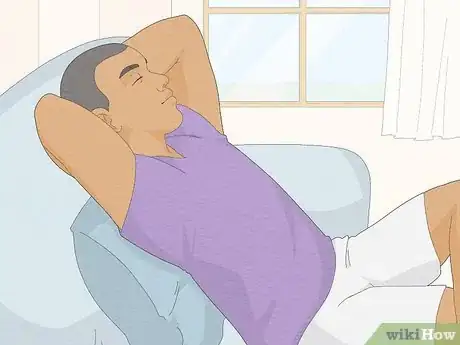
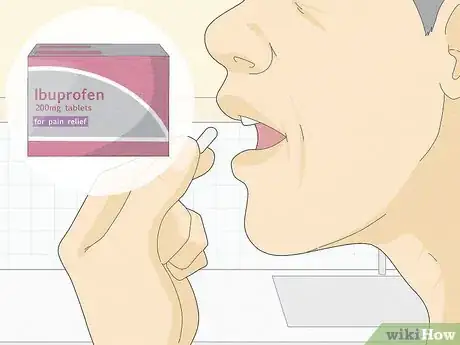
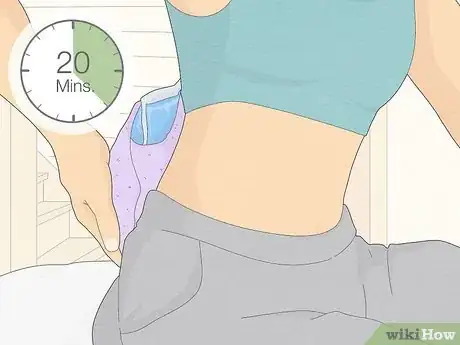
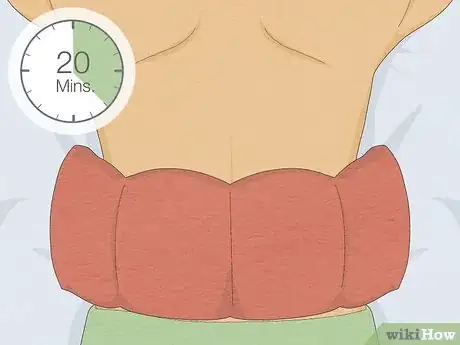
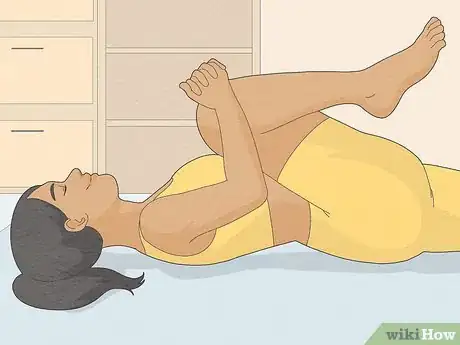
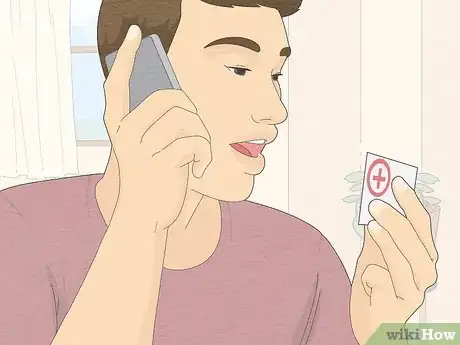
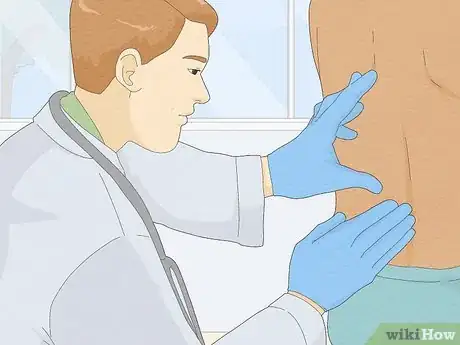
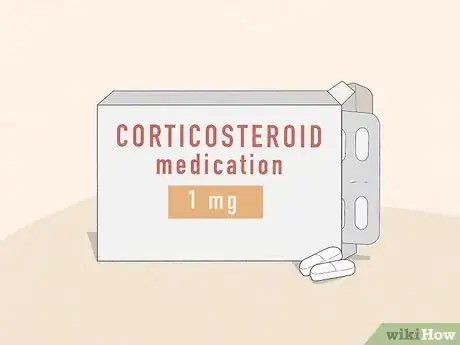
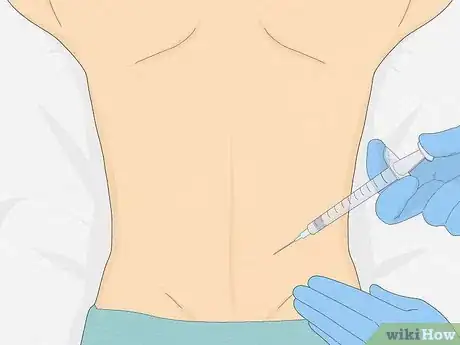
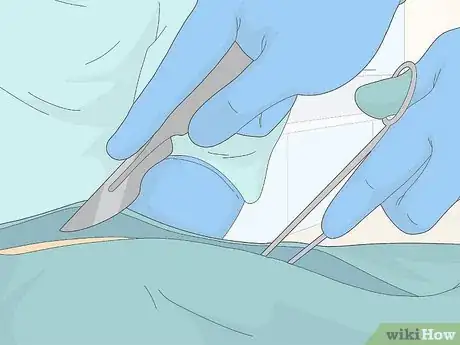
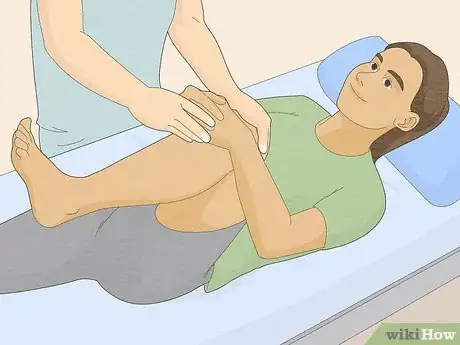
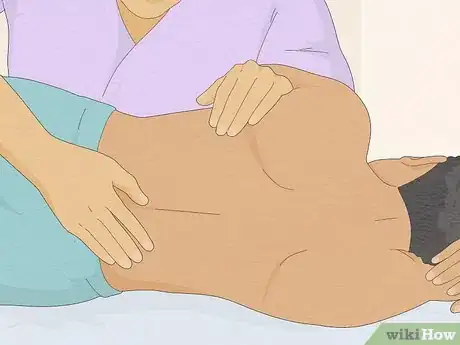
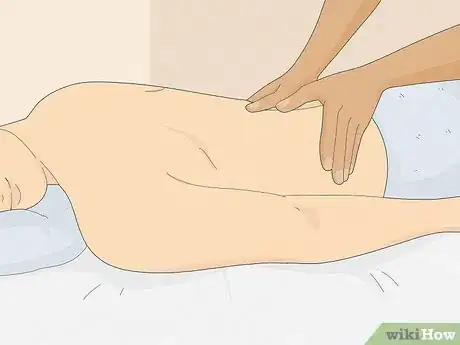
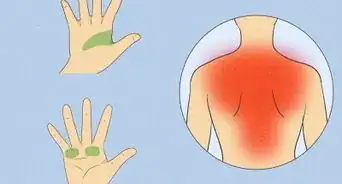
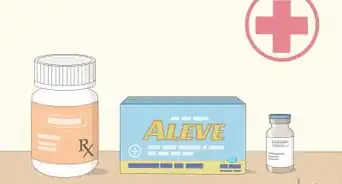
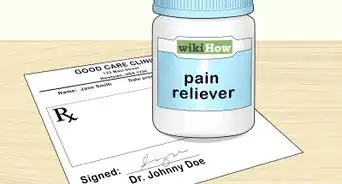
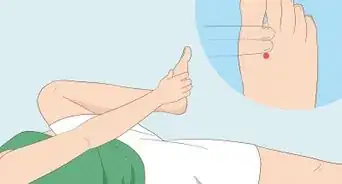
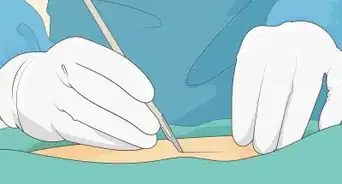

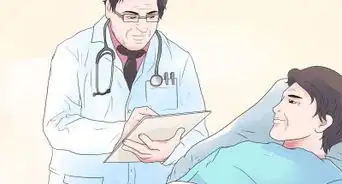
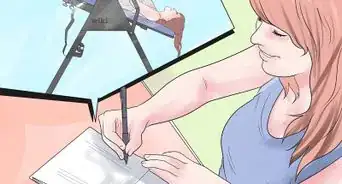
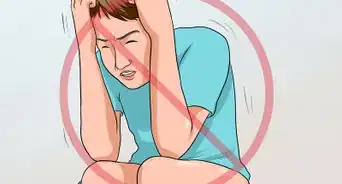
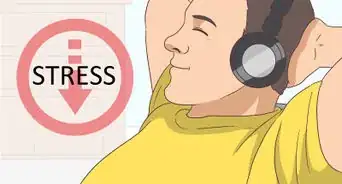

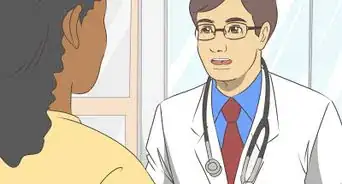
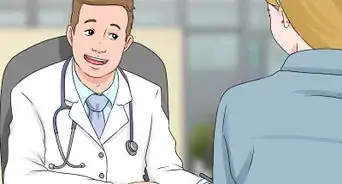
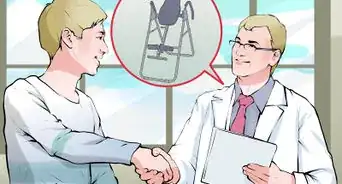











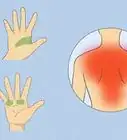
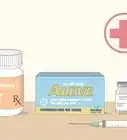
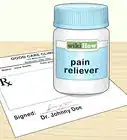
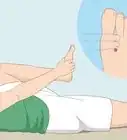



































Medical Disclaimer
The content of this article is not intended to be a substitute for professional medical advice, examination, diagnosis, or treatment. You should always contact your doctor or other qualified healthcare professional before starting, changing, or stopping any kind of health treatment.
Read More...